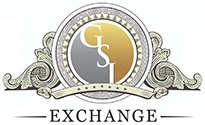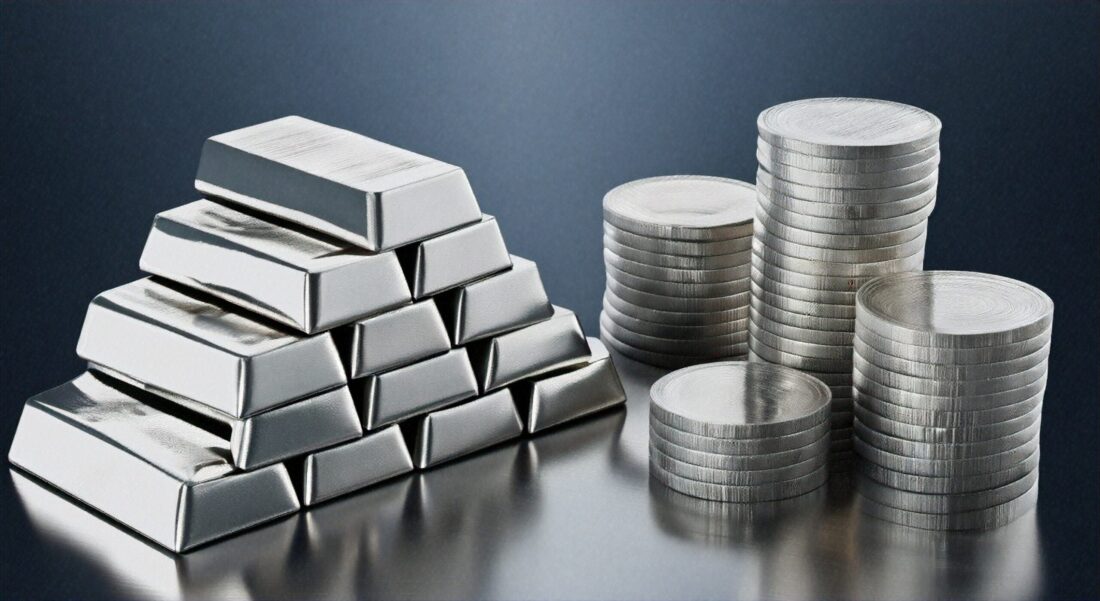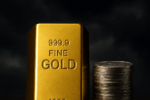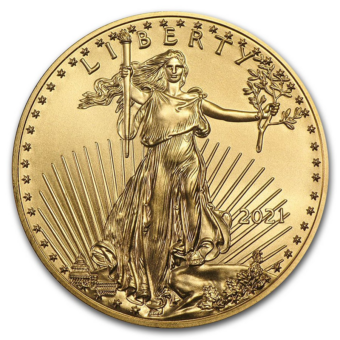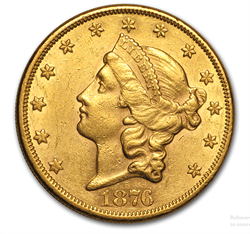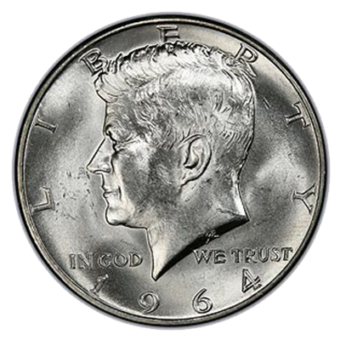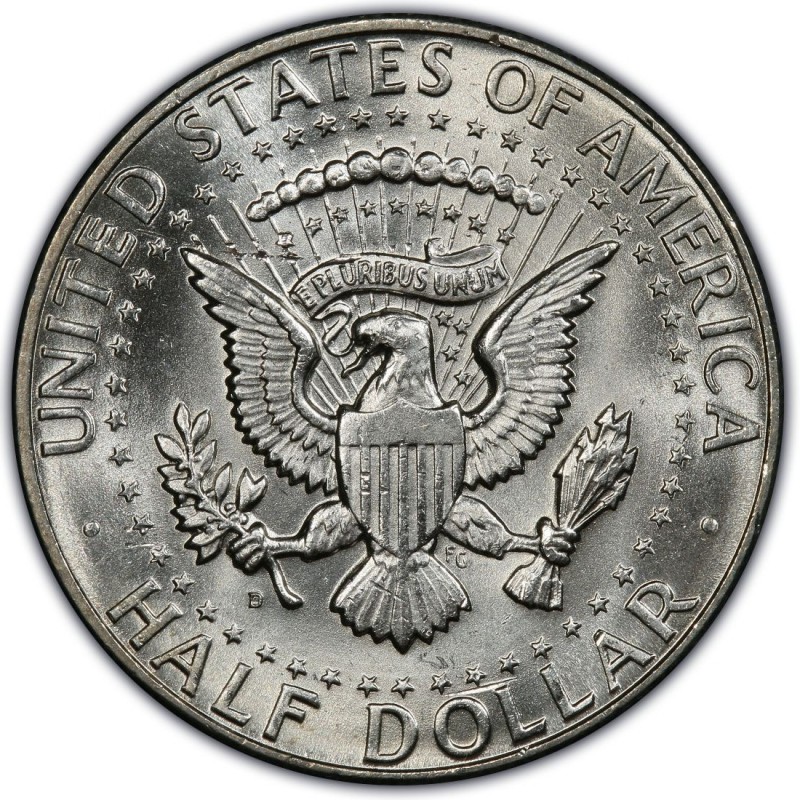Monday - 7.21.25: Gold and silver prices jumped sharply near midday Monday, with gold hitting a four-week high and silver futures nearing a 14-year high close, supported by a weaker U.S. dollar and falling Treasury yields. August gold climbed $56.50 to $3,415.00, while September silver rose $0.851 to $39.315. The U.S. dollar index is solidly lower as bullish momentum fades, crude oil is slightly down around $67 a barrel, and the 10-year Treasury yield sits near 4.3%.
Tuesday - 7.22.25: Gold surged to a five-week high and silver hit a nearly 14-year high at midday, driven by a weakening U.S. dollar and falling Treasury yields. Technical buying also supported the rally, as both metals maintain strong bullish chart patterns. August gold rose $32.40 to $3,439.10, while September silver gained $0.196 to $39.52. Meanwhile, currency markets signal more downside for the dollar, with one-month risk reversals turning negative and analysts, including Peter Kinsella of UBP, forecasting continued dollar weakness into August.
Wednesday - 7.23.25: Gold prices fell sharply near midday Wednesday due to solid profit-taking after reaching a five-week high overnight, while silver dipped slightly after hitting a nearly 14-year high. The decline in both metals was driven by improved risk appetite following a major U.S.-Japan trade deal, which includes 15% U.S. tariffs on Japanese imports and a $550 billion Japanese investment fund for the U.S. President Trump hailed it as the “largest ever” trade deal. August gold was last down $46.30 at $3,396.80, and September silver was down $0.18 at $39.39.
Thursday - 7.24.25: Gold and silver prices declined midday Thursday due to profit-taking by short-term traders and weak long liquidation in gold. A stronger overall market risk appetite also weighed on the safe-haven metals. August gold dropped $19.50 to $3,378.40, and September silver fell $0.218 to $39.285.
Friday - 7.25.25: Gold and silver prices fell Friday morning on continued profit-taking, with August gold down $32.70 to $3,340.80 and September silver down $0.319 to $38.905. Markets showed mixed sentiment, with Asian and European stocks mostly lower and U.S. indexes slightly higher. Trump visited the Fed, urging rate cuts while clashing with Powell over renovation costs. Meanwhile, China’s budget deficit hit a record $733 billion amid shrinking exports due to U.S. tariffs. A lukewarm EU-China summit produced minimal progress, aside from a shared climate statement and supply chain dialogue.
Is Silver on the Way to a New High?
Silver nears $40 with bullish technical, tightening supply, and rising speculative interest all pointing toward a possible breakout past historic highs.
The Big Picture
Silver prices surged to a 14-year high in July 2025, continuing a powerful uptrend that began in 2020. With technical resistance near $40 now in sight, the combination of bullish chart patterns, a deepening supply deficit, and growing investor demand suggests silver may challenge its all-time highs set in 1980 and 2011. Analyst Andrew Hecht points to strong alignment between fundamentals and technicals—often a precursor to parabolic moves in volatile assets like silver. The market’s long-standing undervaluation relative to gold and fiat currency concerns could add even more momentum.
What’s Happening
Silver futures rose above $38.50 by mid-July, hitting a peak of $39.57 on July 14—marking a 240% gain since the March 2020 low of $11.64. The technical setup, including a Q2 bullish key reversal pattern, suggests further upside. On the fundamental side, the Silver Institute projects a 150 million-ounce supply shortfall for 2025, the fifth consecutive deficit year. If investment and speculative demand spike—as they did with copper after new tariffs—silver prices could rapidly break through long-standing resistance. Tariff speculation, particularly in light of the U.S. government’s July copper tariff, could also act as a bullish wildcard for silver.
By the Numbers
- Q2 silver close: $35.852/oz
- July 14 high: $39.57/oz
- 14-year high: Latest peak
- Next technical targets: $49.82 (2011 high), $50.32 (1980 all-time high)
- Supply deficit forecast (2025): 150 million ounces
- Silver open interest (July 17): 172,865 contracts (well below 2019 record of 229,680)
- Silver historical volatility: 23.57% vs. gold’s 13.28%
- Mexico: World’s top silver producer
Why It Matters
The silver market may be on the cusp of a major breakout, with technical momentum and structural supply deficits reinforcing one another. Rising prices could attract a wave of speculative buying, especially if tariffs extend to silver, as seen with copper. With gold already outperforming fiat currencies and central banks increasing gold holdings, silver may be next to reassert its role as hard money. A breakout past $50 would not only signal bullish conviction but could also serve as a broader indictment of fiat currency credibility and monetary policy risk.
The Bottom Line
Silver’s fundamentals and technicals are now in rare alignment, setting the stage for a potential surge past its 1980 and 2011 highs. A move above $50 could serve as a market-wide signal of waning faith in fiat currencies and rising interest in hard assets. While silver’s volatility ensures no smooth ride, the current setup suggests that price weakness remains a strategic buying opportunity in what may become a historic rally.
Dovish Fed Comments Stoke FOMC Drama, Gold Eyes $3,500
Fed governor's rate-cut pitch adds intrigue to central bank leadership and fuels bullish momentum in gold.
The Big Picture
Gold is gaining support from unexpected dovish comments by Fed Governor Christopher Waller, who has called for aggressive interest rate cuts and may be positioning himself as a potential successor to Chair Jerome Powell. According to Commerzbank’s Thu Lan Nguyen, Waller’s remarks—paired with Trump’s escalating attacks on Powell and calls for sharply lower rates—could push gold back toward its April all-time high near $3,500. With Fed leadership uncertainty growing and inflation risks mounting, gold’s safe-haven appeal is once again in focus.
What’s Happening
Waller’s call for 125–150 basis points in rate cuts, targeting a "neutral" 3% rate, contrasts sharply with Powell’s more cautious stance. While his comments are unlikely to sway FOMC policy in the immediate term, analysts believe Waller’s position could make him a top contender for Fed Chair if Trump wins reelection. His openness to overlook tariff-induced inflation increases and tolerate short-term price spikes is seen as bullish for gold. Meanwhile, Trump has intensified personal attacks on Powell, publicly demanding much lower rates and signaling a potential overhaul of Fed leadership in 2026.
By the Numbers
- Fed rate cuts proposed by Waller: 125–150 basis points
- Target Fed Funds Rate: ~3%
- Trump’s desired rate range: 1.25%–1.5%
- Spot gold (July 23): $3,415.19/oz (–0.54% daily, +2.17% past 5 days)
- Key resistance level: $3,432/oz
- Support level tested: $3,405/oz
Why It Matters
The escalating battle over Fed policy is injecting volatility into markets and raising questions about central bank independence. Analysts warn that politicizing the Fed could erode investor confidence in the U.S. dollar and Treasuries. If the Fed’s credibility weakens, it may lose its ability to stabilize markets through tools like quantitative easing. Safe-haven assets like gold stand to benefit, especially if Trump reshapes Fed leadership or follows through on threats to fire Powell. With uncertainty rising across monetary and geopolitical fronts, gold is increasingly viewed as a hedge against both inflation and institutional instability.
The Bottom Line
Gold is poised to retest its all-time highs as political intrigue at the Fed intensifies. Waller’s dovish stance, Trump’s public pressure campaign, and broader fears about central bank independence are converging to create a favorable environment for safe-haven demand. While immediate policy shifts remain unlikely, the prospect of leadership change and rising inflation tolerance suggest gold could break above $3,500—and possibly hold there—as the drama at the Fed unfolds.
Altcoin Season Heats Up as Bitcoin Dominance Slips
Crypto traders are diving into lesser-known tokens as altcoins outperform Bitcoin—but the ride is riskier than it looks.
The Big Picture
Crypto markets are entering what’s known as “altcoin season”—a period where lesser-known cryptocurrencies surge ahead of Bitcoin. With Bitcoin’s market dominance down roughly 7% in the past month, altcoins are grabbing the spotlight, evoking memories of 2017 and 2021 when speculative bets on obscure tokens delivered massive gains. But this boom comes with a warning: the same volatility that creates overnight millionaires can just as easily wipe them out.
What’s Happening
In the past week, 16 of the top 20 non-stablecoin digital assets have outperformed Bitcoin. As new tokens flood the market, many gain traction thanks to hype cycles on social media and influencer backing. Traders are seeing “coin of the week” trends emerge—short-lived obsessions that soar when liquidity pours in but plunge just as quickly when attention fades. While seasoned traders might ride these waves, retail investors can easily get caught in sharp drawdowns.
By the Numbers
- Bitcoin market share: –7% over the past month
- Top 20 altcoins: 16 outperformed Bitcoin in the last week
- Altcoin volatility: +200% overnight gains possible, but –50% drops just as fast
- Key insight: Spot market altcoins can yield returns similar to leveraged traditional trades—but without borrowing risk
Why It Matters
Altcoin cycles attract everyday investors with the promise of high returns, often without using leverage. But that appeal can be deceptive. As Greg Magadini of Amberdata notes, traders often place oversized bets thinking they’ve found the next breakout token. Meanwhile, Chris Cecere, a former hedge fund trader now in crypto, warns that the nature of altcoins—fast-moving and sentiment-driven—requires patience and caution. The worst mistake? Using leverage. When trades go south, debt magnifies the pain.
The Bottom Line
Altcoin season offers big upside—but even bigger risks for the unprepared. As speculative fever spreads, seasoned pros advise retail traders to keep positions small, scale in gradually, and avoid leverage at all costs. The wild swings that define this corner of crypto are part of the game—but without discipline, altcoin season can end in heartbreak just as fast as it began.
Next Week’s Key Events
Economic Calendar: July 28 – August 1, 2025
Monday, July 28
None scheduled
Tuesday, July 29
- 9:00 AM ET – S&P Case-Shiller Home Price Index (May)
Tracks changes in home prices across major metropolitan areas; a key gauge of housing inflation. - 10:00 AM ET – Consumer Confidence (July)
Measures household sentiment; higher readings can signal strong consumer spending. - 10:00 AM ET – JOLTS Report (June)
Job openings and labor turnover; provides insights into labor market tightness.
Wednesday, July 30
- 8:15 AM ET – ADP Employment Report (July)
Private-sector job growth ahead of the official jobs report; seen as an early labor market signal. - 8:30 AM ET – GDP (Q2)
The broadest measure of economic activity; critical for gauging growth momentum. - 10:00 AM ET – Pending Home Sales (June)
Leading indicator for housing activity based on contract signings. - 2:00 PM ET – FOMC Interest-Rate Decision
Highly anticipated Fed announcement on interest rates; can trigger major market volatility.
Thursday, July 31
- 8:30 AM ET – Initial Jobless Claims (Week Ending July 26)
Weekly read on unemployment trends; rising claims may signal labor market cooling. - 8:30 AM ET – PCE Index (June)
The Fed’s preferred inflation gauge; influences future policy direction.
Friday, August 1
- 8:30 AM ET – U.S. Employment Situation Summary (July)
The key jobs report, covering payrolls, unemployment rate, and wage growth. - 9:45 AM ET – S&P Final U.S. Manufacturing PMI (July)
Tracks factory activity; helps assess industrial strength. - 10:00 AM ET – ISM Manufacturing (July)
Monitors manufacturing sector health; watched for signs of expansion or contraction. - 10:00 AM ET – Consumer Sentiment (Final – July)
Measures consumer attitudes about the economy; influences spending behavior.
IMPACT ON PRECIOUS METALS MARKETS
S&P Case-Shiller Home Price Index (Tuesday, July 29):
Surging home prices may hint at sticky inflation, which could boost gold as a hedge. A slowdown could signal easing inflationary pressures, dampening metals.
Consumer Confidence (Tuesday, July 29):
Rising optimism may curb safe-haven demand. A drop in confidence could fuel gold and silver buying on recession concerns.
JOLTS Report (Tuesday, July 29):
Tight labor market readings could pressure metals by reinforcing Fed hawkishness. Softening job openings may support safe-haven inflows.
ADP Employment Report (Wednesday, July 30):
Stronger job gains might dent gold by signaling economic strength. Weak data may revive fears of a slowdown, boosting metals.
GDP – Q2 (Wednesday, July 30):
Above-expectation GDP growth could weigh on gold and silver as risk appetite rises. A weak GDP number would likely support precious metals on economic caution.
Pending Home Sales (Wednesday, July 30):
Stronger housing momentum may suppress metals. A miss could increase economic worries and benefit safe-haven assets.
FOMC Interest-Rate Decision (Wednesday, July 30):
A rate hike or hawkish guidance could hurt gold by lifting the dollar and yields. Dovish signals or rate cuts may provide strong tailwinds for precious metals.
Initial Jobless Claims (Thursday, July 31):
Higher claims may suggest a weakening labor market, supporting gold and silver. Persistent strength could pressure safe-haven demand.
PCE Index (Thursday, July 31):
A hot PCE reading could renew inflation concerns and support gold. Cooling inflation might ease the case for holding metals.
U.S. Employment Report (Friday, August 1):
Strong payrolls and wage growth could push metals lower. A disappointing report would likely lift gold and silver on recession and Fed pivot hopes.
S&P Final Manufacturing PMI (Friday, August 1):
A robust reading may reduce safe-haven interest. Weak factory data could highlight economic fragility, supporting metals.
ISM Manufacturing (Friday, August 1):
Better-than-expected manufacturing strength may dent metals. A contraction would likely boost gold and silver.
Consumer Sentiment – Final (Friday, August 1):
Upbeat sentiment can reduce gold demand. Declining sentiment tends to favor precious metals amid rising uncertainty.
